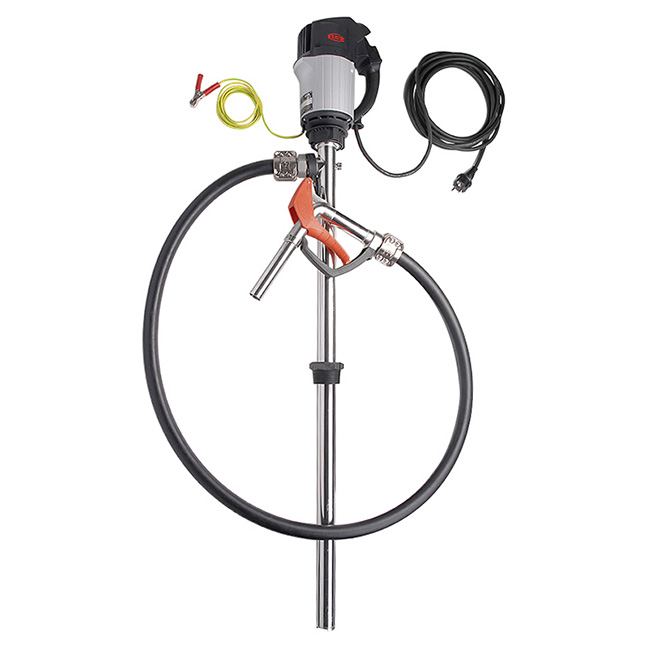Have you ever heard of a drum pump and wondered what it is, how it works, and why you might need one? If so, this blog post is for you! We will take a comprehensive look at the basics of Drum Pumps – from the definition to their various uses. After reading it, you’ll walk away with enough knowledge to make an informed decision on whether or not a Drum Pump is something that your business needs. So get ready; let’s dive into exploring everything related to Drum Pumps!
Introducing Drum Pumps – What They Are and How They Work
Drum pumps are an essential tool for safely and efficiently transferring fluids from storage containers such as drums and barrels. The design of drum pumps is simple, yet effective. They consist of a motor or hand-operated pump that is inserted into the container and a tube that extends from the pump into the liquid. When the pump is activated, it draws the liquid up through the tube and out of the container. Drum pumps are available in a range of materials, including stainless steel, polypropylene, and PVDF. They can handle a variety of fluids, including acids, solvents, and oils. Whether you’re in the industrial, agricultural, or chemical sector, drum pumps are an indispensable piece of equipment for transferring fluids safely and efficiently.
Benefits of Using a Drum Pump
Drum pumps are an essential tool in many industries. They provide an efficient and easy way to transfer fluids from one container to another. Using a drum pump can save time and money, while also reducing the risk of spills and contamination. One of the key benefits of drum pumps is their versatility. They can be used with a wide range of liquids, including chemicals, oils, and fuels. Whether you need to transfer a small amount or several gallons, a drum pump can handle the job. Additionally, drum pumps are available in a variety of materials, such as stainless steel or plastic, so they can be tailored to suit different needs. Overall, investing in a drum pump can significantly improve your fluid transfer processes and contribute to a safer and more efficient workplace.
Types of Drum Pumps Available
When it comes to drum pumps, there are several types of filling machines & systems available depending on your specific needs. For instance, you can choose a hand-operated pump if you only need to transfer small amounts of liquid. However, for larger quantities, an electric or pneumatic pump would be more suitable. Chemical drum pumps are also available if you’re dealing with hazardous chemicals, while sanitary pumps are best for food and pharmaceutical-grade liquids. Ultimately, the type of drum pump you choose should correspond to the type of liquid you’ll be transferring and the frequency of use. By considering these factors, you can select a drum pump that ensures efficient and safe liquid transfer.
Safety Considerations when Using a Drum Pump
When it comes to using a drum pump, safety should be the top priority. Whether you’re working with chemicals, oils, or other liquids, there are several safety considerations to keep in mind. First and foremost, make sure you’re wearing the appropriate personal protective equipment, including gloves, safety glasses, and a respirator if necessary. It’s also important to choose the right pump for the material you’re working with and to properly secure the drum before pumping. Additionally, be sure to avoid any sparks, flames, or other ignition sources in the vicinity. By taking these precautions, you can minimise the risk of accidents and ensure a safe and successful pumping process.
Tips for Maintaining Your Drum Pump
Drum pumps are essential tools for transferring liquids from one container to another. But just like any other tool, they require regular maintenance to ensure they remain in optimal condition. Here are some tips to help you maintain your drum pump and prolong its lifespan. Firstly, always clean your pump after use to prevent any leftover liquid from damaging the pump or contaminating the next liquid. Secondly, ensure the pump is always kept dry when not in use to prevent rust or corrosion. Lastly, lubricate the pump regularly to reduce the wear and tear of the moving parts. By following these simple maintenance tips, you can ensure your drum pump remains in excellent condition for years to come.
Troubleshooting Common Issues with Drum Pumps
Drum pumps are an essential piece of equipment for any industrial setting. However, just like any mechanical tool, drum pumps can face common issues during operation. From chemical compatibility to clogging, understanding how to troubleshoot these issues can keep production running smoothly. One common issue is the pump’s inability to start or slow output, which can be caused by a worn-out motor or damaged seals. Another issue includes the pump drawing air instead of the product, which can be solved by tightening the connections between the intake and pump. By taking the time to understand and address these common issues, you can enjoy the continued use of your drum pump and maintain efficient production.
Drum pumps offer a great solution for quickly transferring liquid from one place to another. Not only can they save time, but also help you to maintain safety standards in the workplace. From mechanical pumps ideal for continuous applications to electric ones perfect for short-term tasks, these machines are incredibly versatile and can be used for various applications. Before buying one, make sure you consider your needs and opt for the pump that best suits them. Regularly inspect your pump as well and check it for any structural damages or clogs. With the right care, drum pumps can provide you with excellent performance over an extended period of time.

